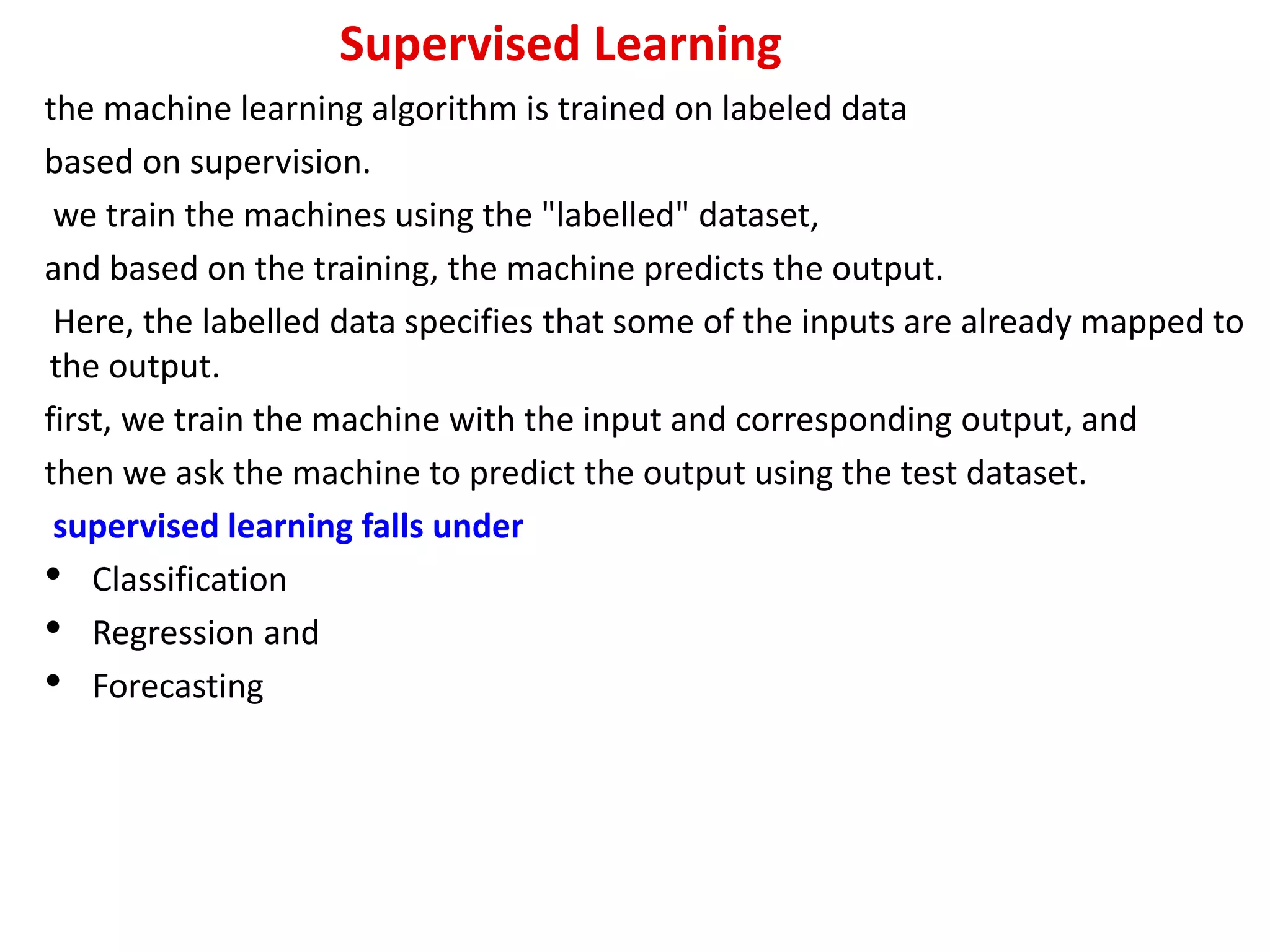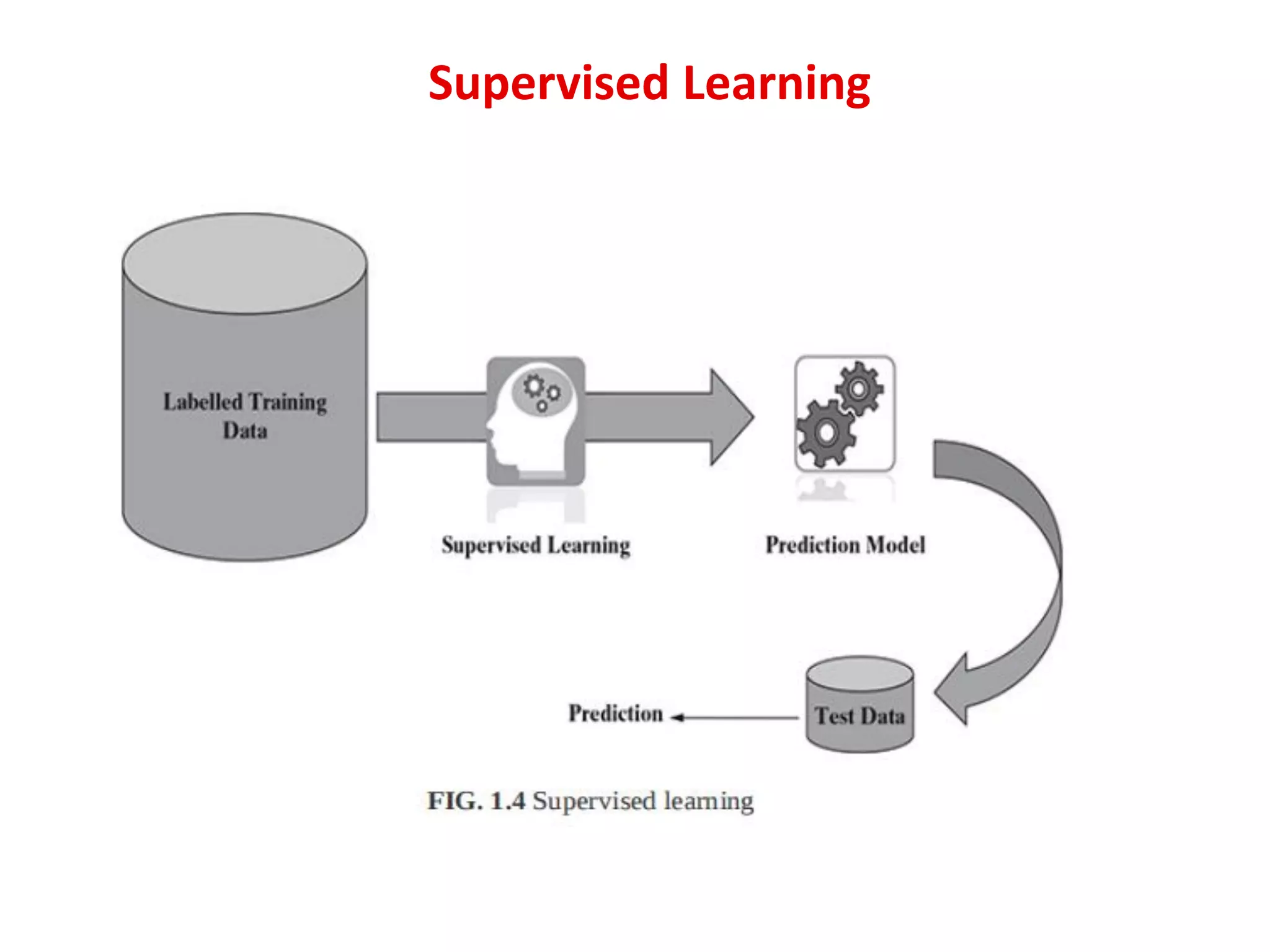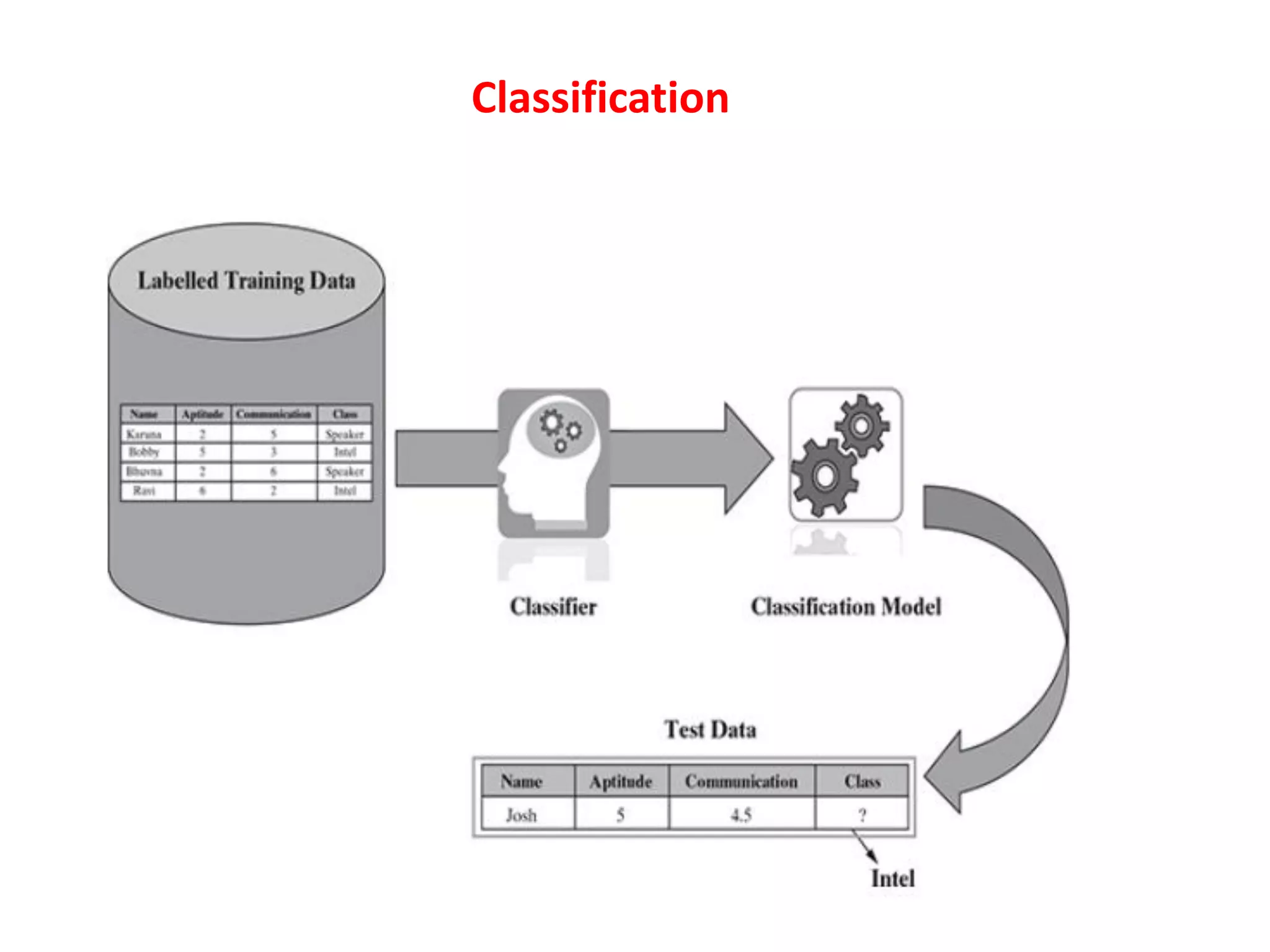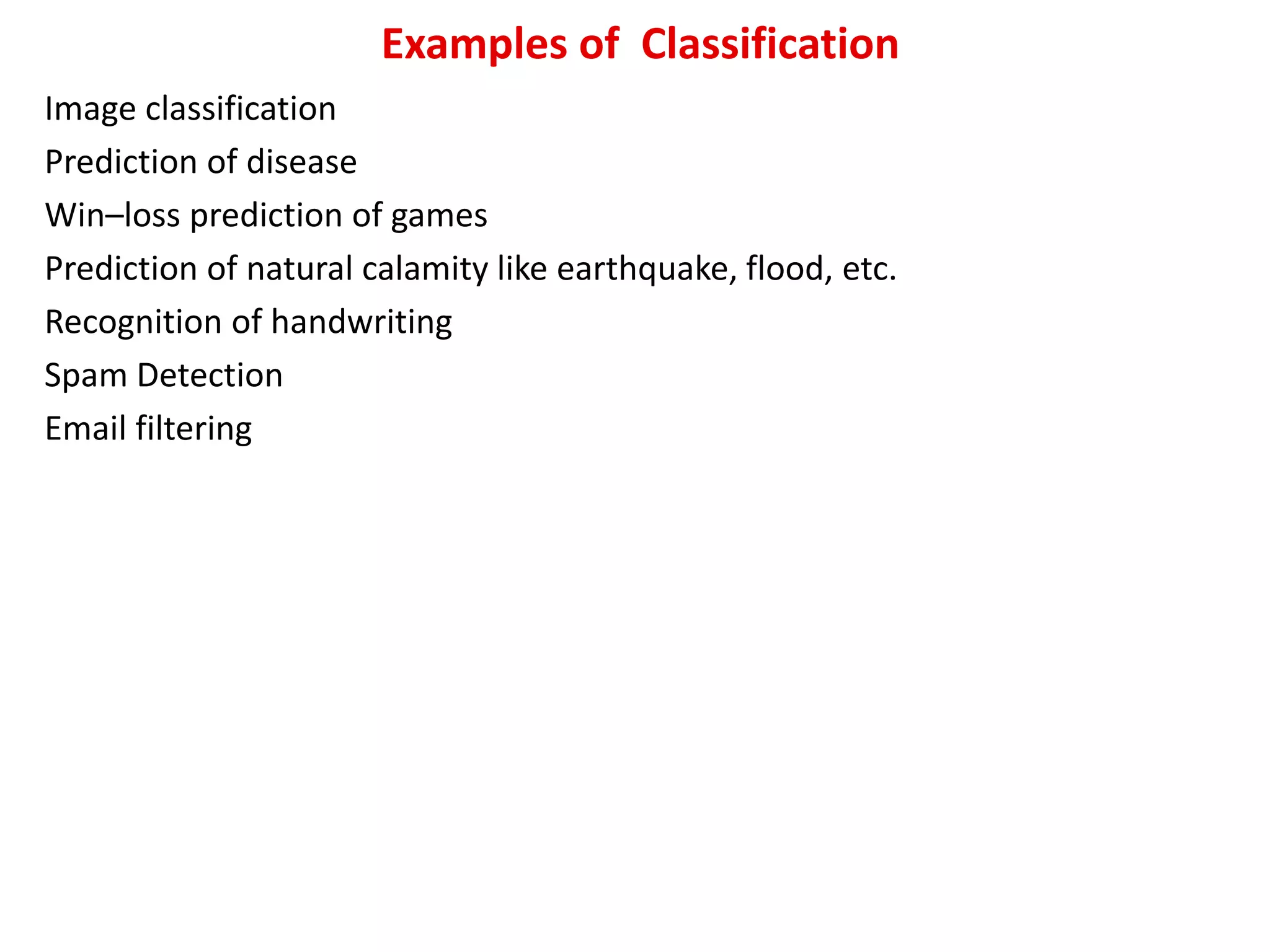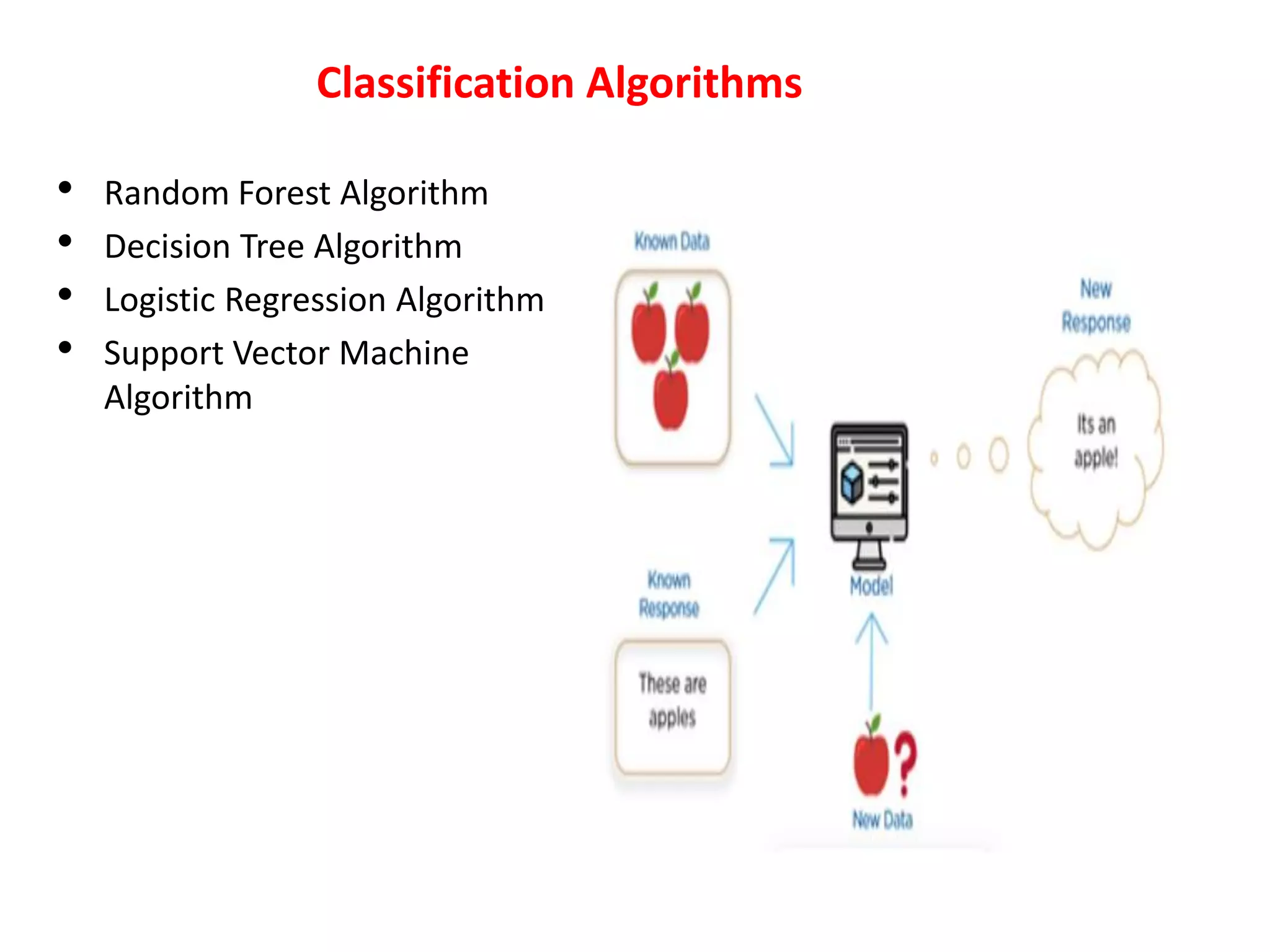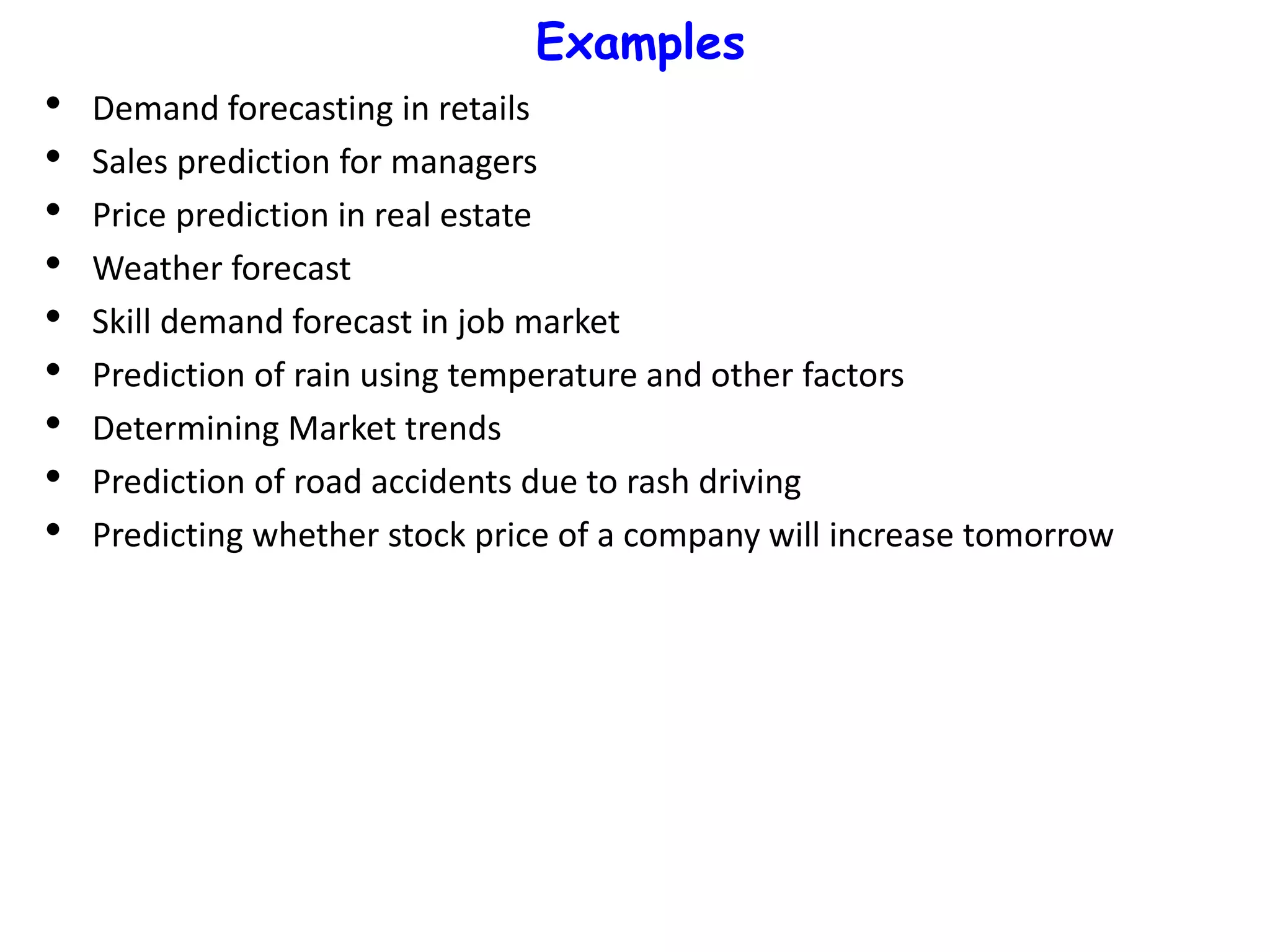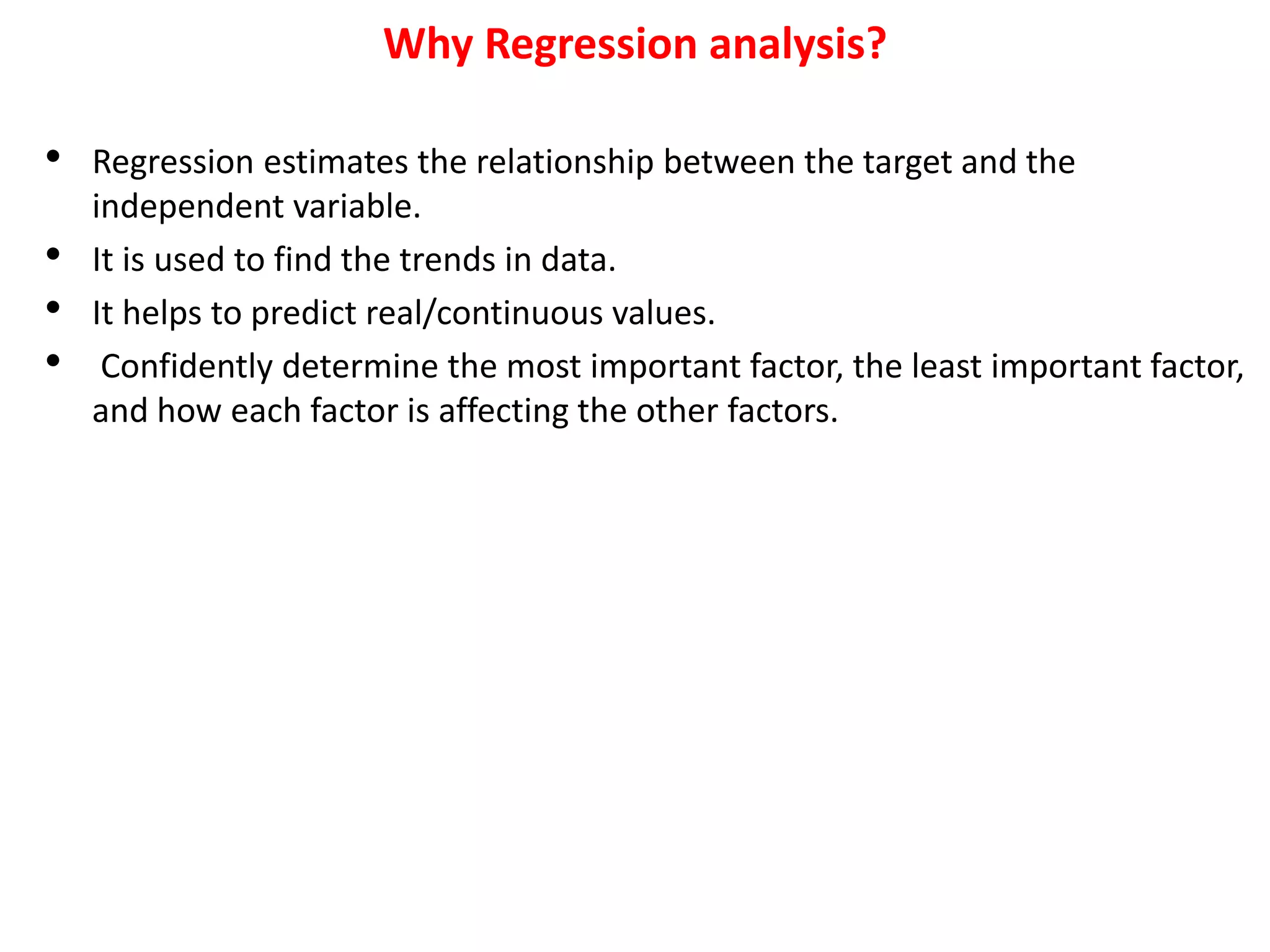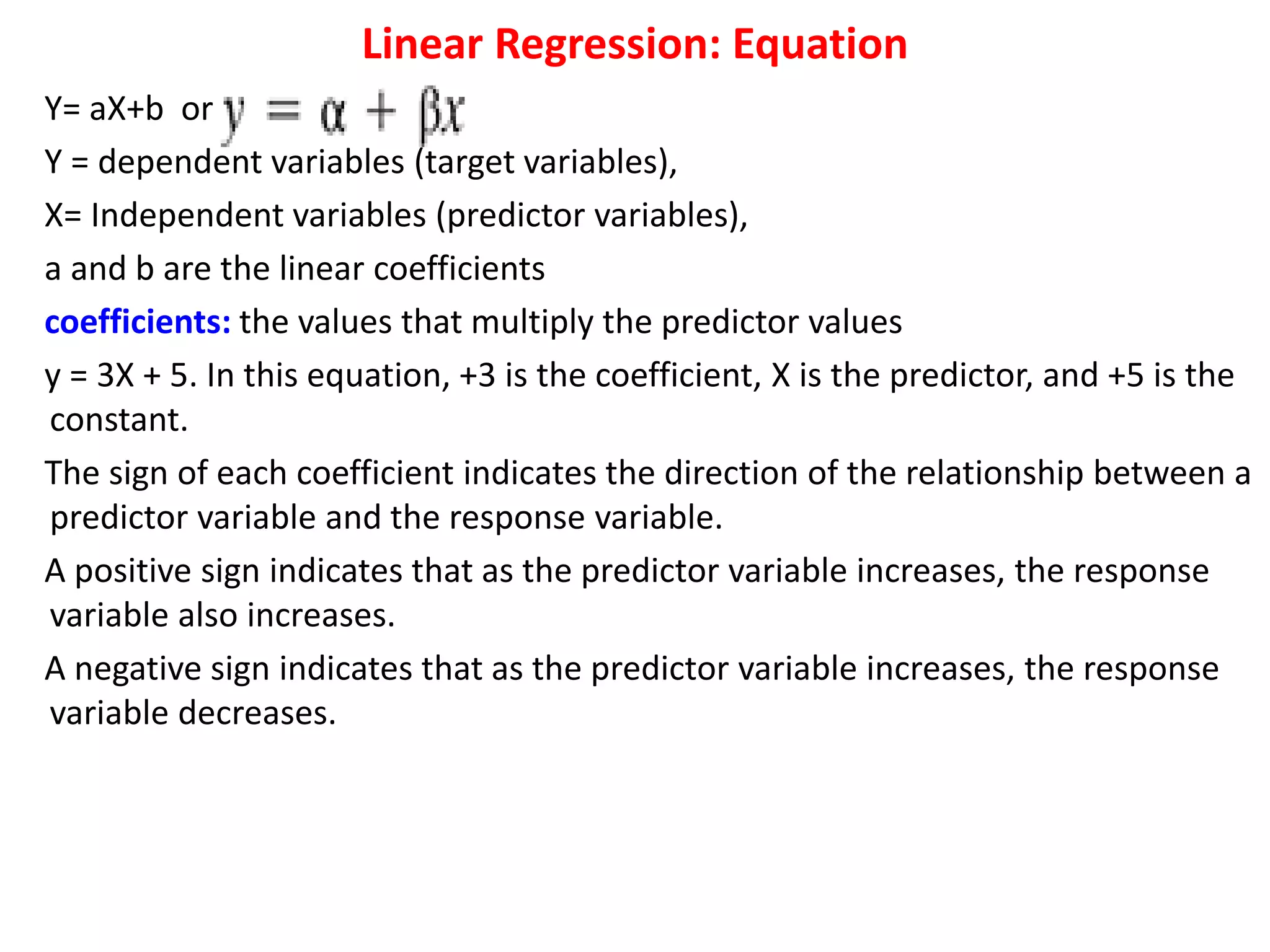This document provides an overview of supervised machine learning algorithms. It explains that supervised learning involves training a model on labeled data so it can predict the correct output for new input data. Some examples of supervised learning tasks include image classification, disease prediction, and spam detection. Classification algorithms are used for predicting categorical outputs, like dog vs cat images. Regression algorithms predict continuous outputs, like housing prices. Common classification algorithms mentioned are random forest, decision trees, logistic regression, and support vector machines. Linear regression is also discussed as a basic regression algorithm that finds a linear relationship between variables.


